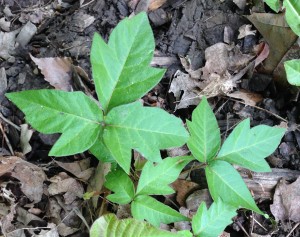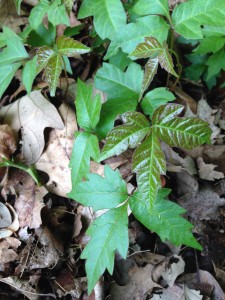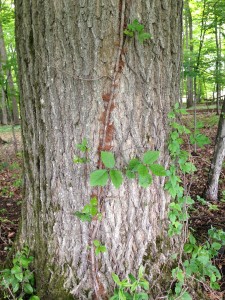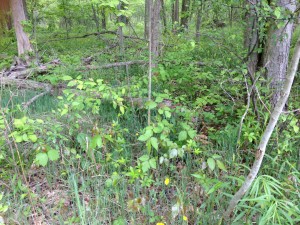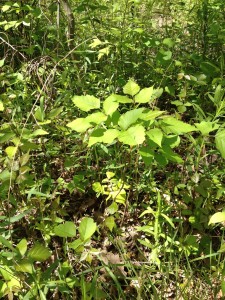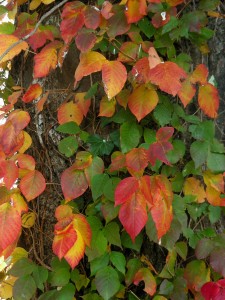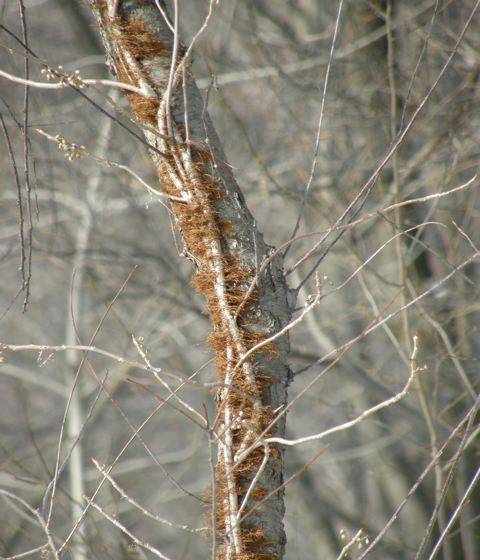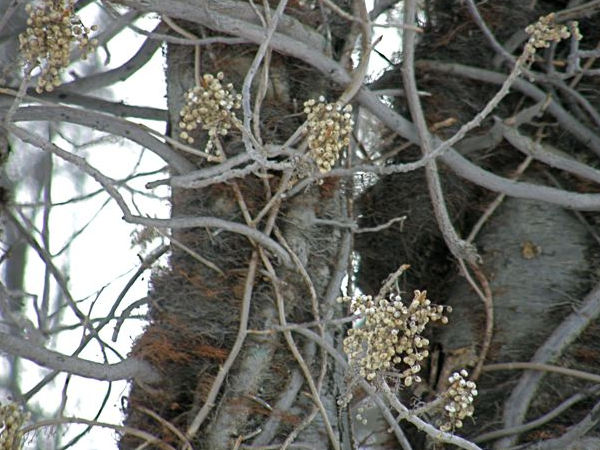Help avoid Poison Ivy this summer!
Have you ever had a Poison Ivy rash? It’s miserable! Awful hives that last for weeks, with only anti-itch creams to help and nothing that really makes it go away. I’m itchy just thinking about it! Poison Ivy produces a toxin called urushiol and it is exposure to the urushiol that causes the skin reactions we all fear. The best defense is to avoid Poison Ivy in the first place, but do you know how to identify it? It grows very aggressively in Ohio, so chances are you’ll come across it if you’re spending time outside. Here are some tips to help identify Poison Ivy:
Remember the rhyme: “Leaves of three, leave them be”. Poison Ivy has compound leaves – clusters of 3 shiny, bright green leaflets with irregular edges.
Leaves can vary in color, with young leaves appearing reddish but turning bright green as they mature.
Poison Ivy tends to grow in shady locations, especially forest edges, along trails, and in landscape beds. It has 3 growth forms:
It can grow as a vine on tree trunks, fences, or buildings
It can grow as a creeping groundcoverg
It can grow almost shrub-like: upright with a woody stem
In autumn the leaves change color to brilliant oranges and reds, which adds to our spectacular autumn scenery.
Even in winter when the leaves have dropped you can still have a reaction if you come in contact with Poison Ivy because the urushiol is always present in the stems, roots, and berries. You can recognize Poison Ivy in winter by the hairy vines and white berries.
So what’s Poison Ivy good for, then? Well, believe it or not Poison Ivy is actually a valuable wildlife plant – wildlife is generally not affected by the urushiol (although it does protect the plant from most caterpillar damage). Deer eat the leaves and berries, rabbits will feed on the stems and bark, and many birds depend on its berries during winter.
In fact, goats are even used in some areas to control Poison Ivy since they love to eat it. Unfortunately, most of us are sensitive to it, so remember: should you come in contact with Poison Ivy, wash the area with cold, running water as soon as possible to minimize the severity of the rash and help control its spread. There are products you can buy that target and remove the urushiol oil so if you spend lots of time outdoors it might be a good idea to check those out. Also, launder contaminated clothing separately.
For more photos and other helpful information, you can visit the following websites: http://www.oardc.ohio-state.edu/weedguide/singlerecord.asp?id=420
http://www.carolinanature.com/trees/tora.html
[fbcomments]

